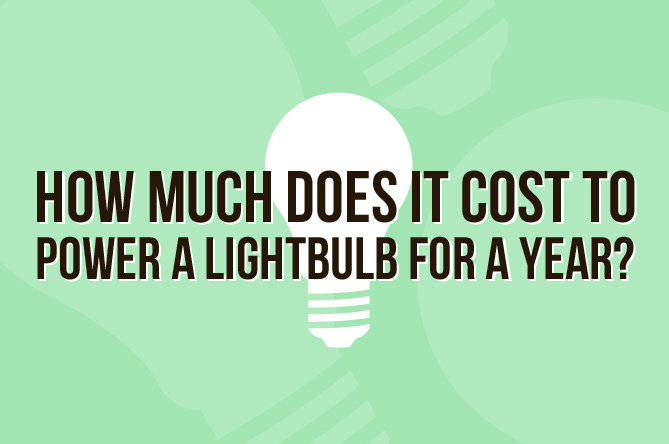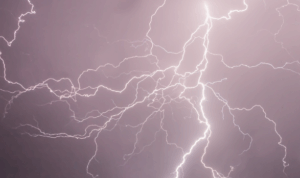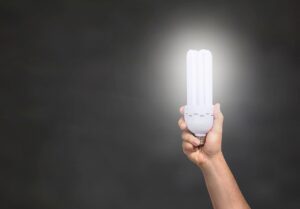Most of us leave lights on in our house at times when we aren’t even using them and never really think of the impact that it has on our bank account or our planet. Because of this, we decided to create an infographic showing how much it would cost to power a 100-watt lightbulb for an entire year. For this infographic we are using an average cost of electricity per kWh of $0.11, and since a 100-watt lightbulb uses 0.1kWhs worth of electricity per hour, weve concluded that to power that lightbulb for 8,760 hours (1 year) it would cost $96.36. Just ONE lightbulb could cost you almost $100 per year. Now we don’t normally (hopefully) leave them on 24/7, but I would guess that you’ve got a lot more than just one lightbulb in your home.
If money isn’t enough of a deterrent to turn your lights off when not in use, think about the environmental impact of leaving that lightbulb on. As shown below, we’ve calculated the amount of coal, natural gas and uranium (nuclear) that would be needed to generate enough electricity to power that one lightbulb for a year. Check out the results below and think twice when leaving that light on, or using anything else that requires electricity if you don’t need to.
Conclusions
$96.36 out of your own pocket and 712 pounds of burned coal (or 145 pounds of natural gas or .0439 pounds of uranium) just to leave one lightbulb on for a year. Doesnt seem worth it does it? At the end of the day all we can do is try to be as energy efficient as we can, but we still need electricity.
What are some better options than Coal, Natural Gas or Uranium?
Solar and Wind energy. As we showed in the infographic, if you had only 100 square metres of solar panels, running at 20% efficiency, you could power that lightbulb for an entire year in just 8 days, 17 hours and 14 minutes. And since youve got more than one lightbulb, there is plenty of time to power more throughout the year. If you used a 1.5MW turbine, running at 25% capacity, you could power that lightbulb for an entire year in just 2 hours and 20 minutes.
When you consider that every megawatt-hour of electricity generated through a solar PV panel avoids more than 1,300 pounds of carbon dioxide, the savings become more than just financial.
If you have any questions about the infographic, or about our services, feel free to contact us at anytime. We look forward to hearing from you!
Understanding the cost of lighting is just the first step towards achieving a more energy-efficient and cost-effective home or business. If you’re looking to dramatically reduce your energy bills and enhance the quality of your lighting, partnering with a trusted expert in LED retrofit services is your next move.
At Daisy Energy, we specialize in LED retrofit solutions that not only reduce your electricity bills but also enhance your space’s lighting quality. Our team of experts is committed to guiding you through every step, ensuring a seamless transition to a brighter, more sustainable future. Don’t let outdated lighting drain your budget and impact the planet. Contact us today to discover how we can illuminate your path to savings and sustainability.




































